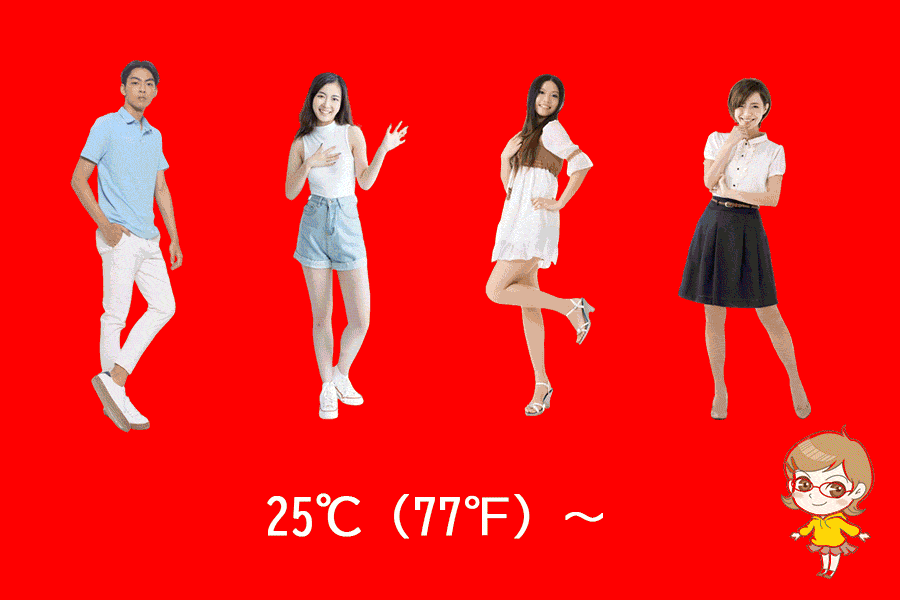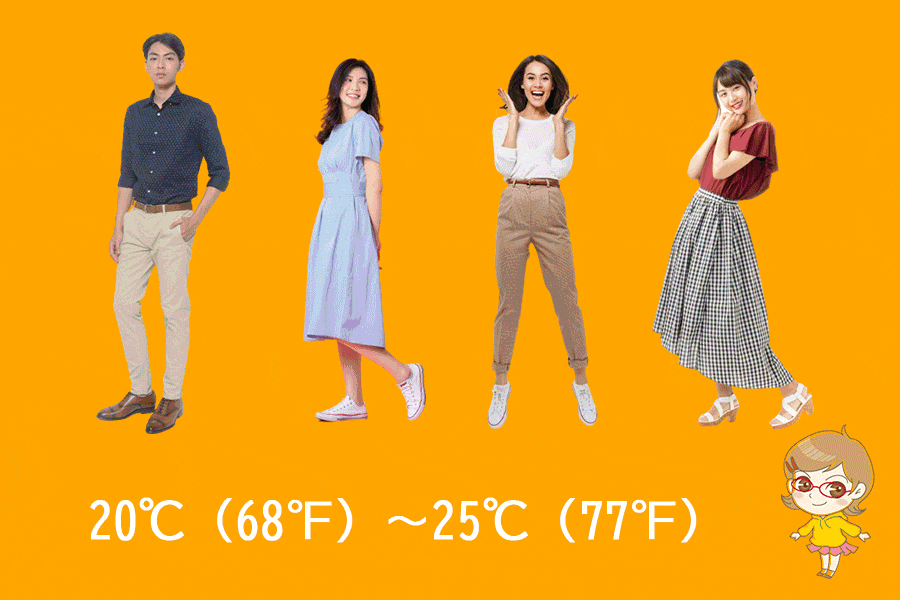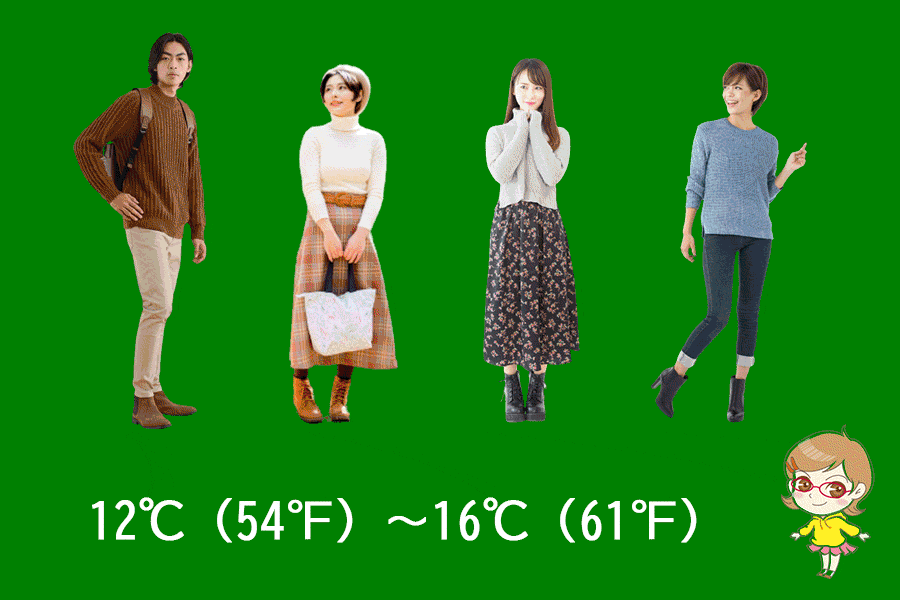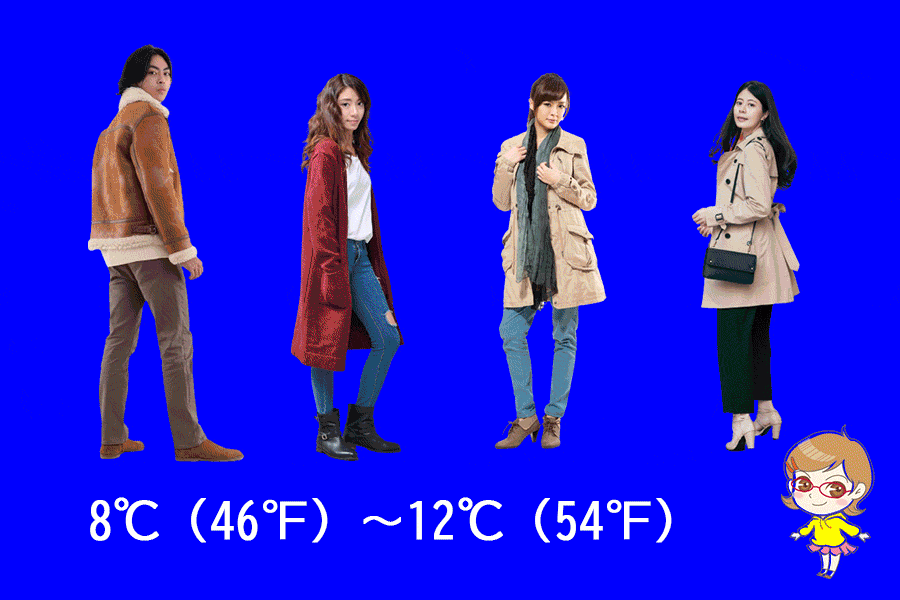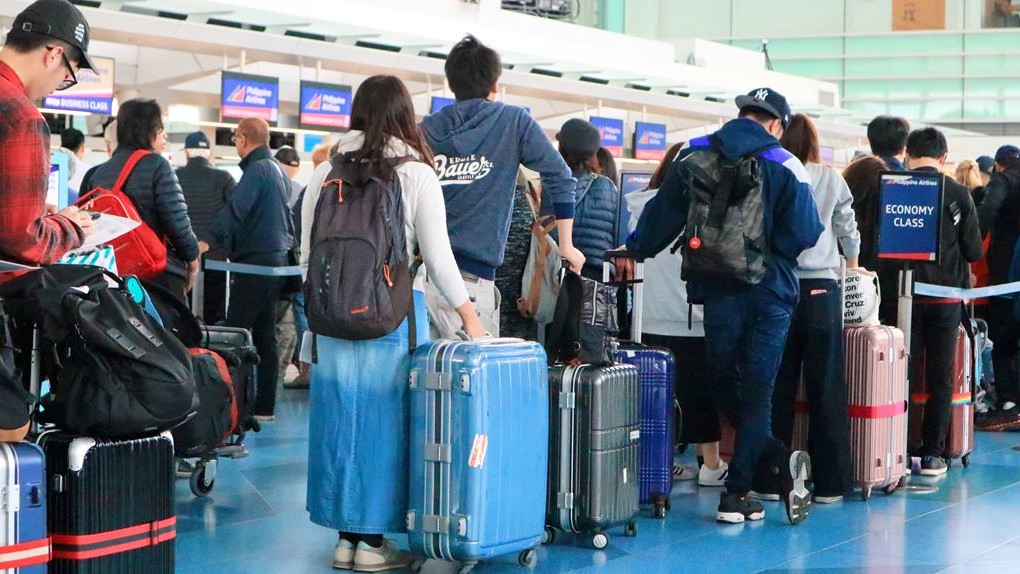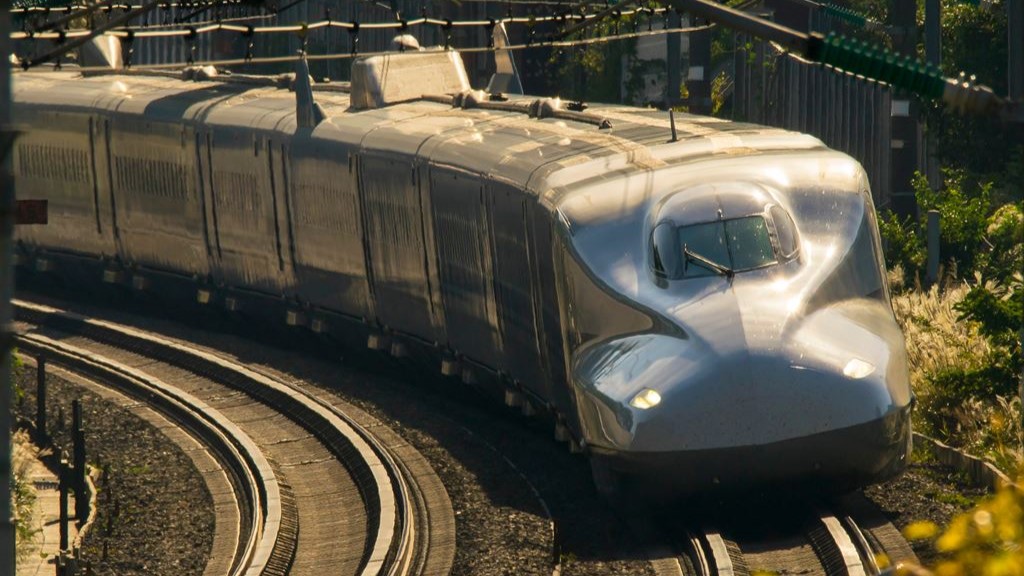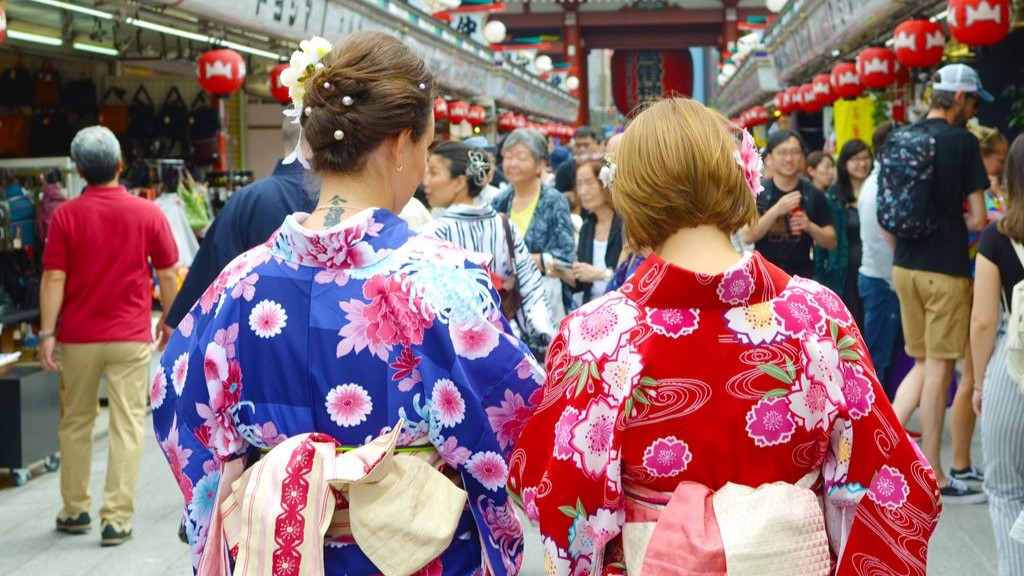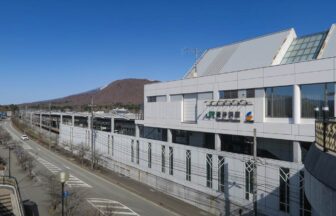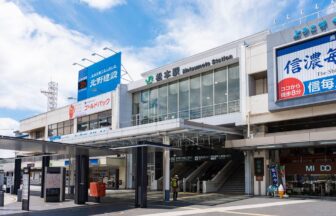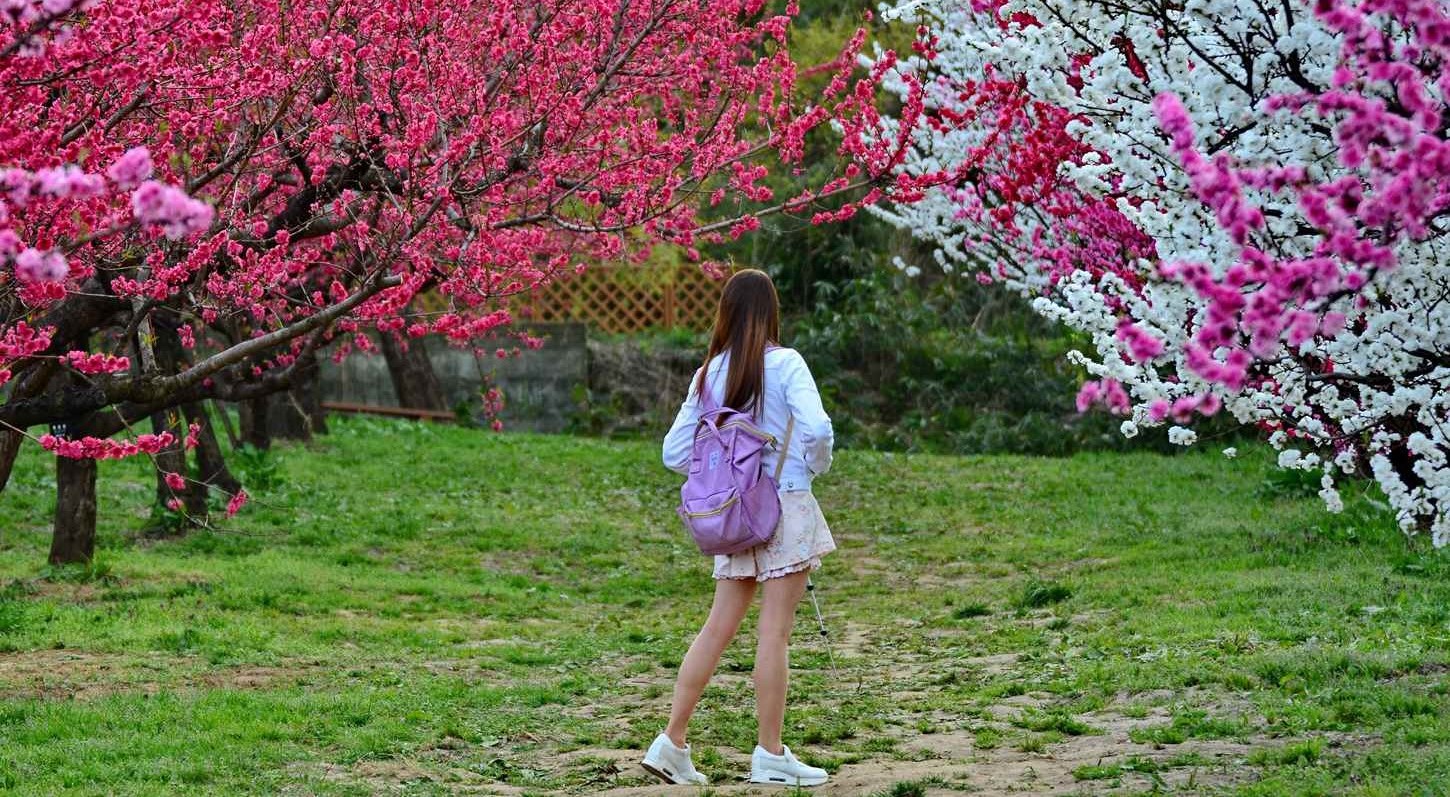Kurita, Nagano, 380-0921 MAP
↓ Click to jump to the relevant section.
| Current Weather | Annual Weather | Tourist Attractions |
| Baggage Deposit | Hotels |
Current weather and clothing

The weather information shown here is the information closest to the station in question. Please note that there may be slight differences.
Yearly temperature changes and recommended clothing
Clothing recommendations for each temperature range
When traveling in Japan with the following average temperatures, the recommended clothing is as follows:
Monthly changes in temperature, precipitation, and snowfall (1991~2020 average, Japan Meteorological Agency survey)
| Jan. | Feb. | Mar. | Apr. | May | Jun. | Jul. | Aug. | Sep. | Oct. | Nov. | Dec. | |
| temperature(°C) | -0.4 | 0.4 | 4.3 | 10.6 | 16.4 | 20.4 | 24.3 | 25.4 | 21 | 14.4 | 7.9 | 2.3 |
| precipitation(mm) | 54.6 | 49.1 | 60.1 | 56.9 | 69.3 | 106.1 | 137.7 | 111.8 | 125.5 | 100.3 | 44.4 | 49.4 |
| snowfall(cm) | 63 | 50 | 17 | 2 | — | — | — | — | — | — | 1 | 30 |
Winter
December
December is one of the coldest months in Nagano, with an average temperature of 2.3°C and an average precipitation of 49.4 mm. It is important to wear warm and thick clothing, such as down jackets, woolen coats, gloves, scarves, and hats. Waterproof and insulated boots are recommended as there may be snowfall during this month. Layered clothing is essential, and thermal undergarments are recommended for extra warmth. It is also advisable to bring a waterproof jacket and pants to stay dry in the event of snow or rain.
January
Nagano Station experiences chilly weather in January with an average temperature of -0.4°C. The temperature can drop to subzero levels during the night, so it is essential to wear warm clothing, such as a thick jacket, gloves, scarf, and hat, to keep warm. It is also advisable to wear thermal or woolen underclothes to protect yourself from the biting cold. As for footwear, it is best to wear insulated boots to keep your feet warm and dry. January is one of the snowiest months in Nagano, with an average precipitation of 63 mm, so it is essential to wear waterproof jackets and pants to stay dry.
February
February is still chilly in Nagano with an average temperature of 0.4°C. It is important to wear warm clothing, such as a heavy jacket, insulated pants, and a warm hat, to stay warm. Insulated boots and thick woolen socks are also essential to protect your feet from the cold. Nagano receives an average precipitation of 49.1 mm in February, and it is advisable to wear waterproof clothing to stay dry.
Spring
March
In March, the weather starts to warm up in Nagano with an average temperature of 4.3°C. However, it can still be chilly, especially at night, so it is advisable to wear a warm jacket, gloves, and a scarf. As for footwear, it is best to wear insulated boots with thick woolen socks. The precipitation in Nagano is relatively high in March, with an average of 60.1 mm, so it is crucial to wear waterproof clothing to stay dry.
April
April marks the beginning of spring in Nagano, with an average temperature of 10.6°C. While it can still be chilly, especially in the evenings, the weather is generally milder. A light jacket or sweater with a scarf should suffice for the daytime, but it is still essential to wear warm clothing during the night. The precipitation in April is lower than the previous months, with an average of 56.9 mm.
May
May is a pleasant month in Nagano, with an average temperature of 16.4°C. The weather is generally mild and comfortable during the day, with cooler evenings. A light jacket or sweater is necessary for the evenings, and it is advisable to wear comfortable walking shoes or sneakers.
Summer
June
June is a relatively warm month in Nagano, with an average temperature of 20.4°C. It is generally sunny and pleasant, but it can rain from time to time, so it is essential to carry an umbrella or wear waterproof clothing. Light clothing, such as shorts, skirts, t-shirts, and sandals, are appropriate for the day.
July
July is one of the warmest months in Nagano Prefecture, with an average temperature of 24.3°C. It is essential to stay cool and comfortable in light clothing such as T-shirts, shorts, skirts, and sandals. July also has a rainy season that lasts until mid-July, with an average rainfall of 137.7mm, so waterproof clothing is essential.
August
August is similar to July in temperature and weather, with an average temperature of 25.4°C. To stay comfortable, light clothing such as T-shirts, shorts, skirts, and sandals are essential. August is also a rainy month in Nagano Prefecture, with an average rainfall of 111.8 mm, so carry an umbrella.
Autumn
September
September in Nagano is mild with an average temperature of 21°C and an average precipitation of 125.5 mm. As the weather becomes cooler, it is important to wear layers of clothing to adapt to changing temperatures throughout the day. Lightweight long-sleeve shirts, light jackets, and pants are recommended for men and women. It is also a good idea to bring a rain jacket or an umbrella since there may be some rainy days during this month.
October
October is one of the most beautiful seasons for viewing the autumn foliage in the area around Nagano Station, with an average temperature of 14.4°C and an average precipitation of 100.3 mm in October. Temperatures drop dramatically, especially in the evenings, so bring a light sweater or jacket to stay warm. Light layered clothing such as long-sleeved shirts, jeans, and light jackets are recommended.
November
The weather in Nagano in November is cold, with an average temperature of 7.9°C and an average rainfall of 44.4 mm. It is important to bring warm clothes, gloves, scarves, hats, and other warm clothing. Layered clothing is also recommended to cope with the daily temperature changes. Warm, waterproof boots are a must during this month, as rain and snow can fall. Both men and women should bring warm sweaters, long pants, and jackets such as down jackets or heavy wool coats.
Recommended tourist destinations
Zenko-ji Temple
I-491 Motoyoshicho, Nagano 380-0851 Nagano Prefecture
The temple is so famous throughout Japan that there is a claim that “you should visit Zenkoji at least once in your lifetime”. The temple has a history of 1,400 years and enshrines the oldest statue of Amida Nyorai in Japan. The approach to Zenkoji is large and lined with many souvenir shops.
Nagano Prefectural Shinano Art Museum Higashiyama Kaii Gallery
1-4-4 Hakoshimizu Zenkoji Higashidonari Shiroyama Park Nai, Nagano 380-0801 Nagano Prefecture
This museum is located in Johyama Park adjacent to Zenkoji Temple. The museum houses the works of Kaii Higashiyama, a master of Japanese-style painting, and also holds various special exhibitions. From the vast terrace on the rooftop plaza, visitors can enjoy the view of Zenkoji Temple and the beautiful surrounding mountains.
Matsushiro
Matsushiro, Matsushiro-machi, Nagano 381-1231 Nagano Prefecture
The townscape of the castle town still retains the atmosphere of the Edo period. The Matsudai Castle (restored), samurai residences with beautiful gardens, merchant houses, and many other historical buildings are scattered throughout the town, making it an enjoyable place to walk around.
Jigokudani Snow Monkey Park
6845 Heion, Yamanouchi-machi, Shimotakai-gun 381-0401 Nagano Prefecture
The Japanese macaques that come to Jigokudani Yaen-koen are widely known both in Japan and abroad for taking hot spring baths to escape the cold in winter. Most of the monkeys visit the hot springs from December to early March. During the rest of the year, you can observe the monkeys up close in this park.
Togakushi Shrine
3506 Toagakushi, Nagano 381-4101 Nagano Prefecture
The shrine has a history of more than 2,000 years and is associated with Japanese mythology. A large shrine consisting of five shrines including Okusha and Chu-sha.A row of 400-year-old cedar trees leads to the inner shrine of Togakushi Shrine, creating a solemn and mysterious atmosphere.
Togakushi Folk Museum Togakushi Ninja Museum
3688-12 Togakushi, Nagano 381-4101 Nagano Prefecture
Togakushi was once a ninja village where Togakure-ryu ninjutsu was practiced. The Folk Museum exhibits folk tools of daily life from that era. The Ninja Museum exhibits materials related to the ninja, and there is also a “Ninja Karakuri Yashiki” where visitors can go through the ninja rooms, stairs, and maze to reach the inner rooms. The “Shuriken Dojo,” where visitors can experience shuriken throwing, is also popular.
Lake Kagami
Togakushi, Nagano 381-4101 Nagano Prefecture
Kagami-ike Pond can be reached by the walking path of the Pond Tour Course from in front of Togakushi Chu-sha Shrine. It is a good place to stop by on a hike from Togakushi Shrine Okusha to the Togakushi Plateau. It is named Kagami-ike (Mirror Pond) because it reflects the Togakushi mountain range like a mirror, and is a popular photo spot.
Hokusai-kan
485 Obuse, Obuse-machi, Kamitakai-gun 381-0201 Nagano Prefecture
Katsushika Hokusai was an ukiyoe artist of the Edo period (1603-1868), world-renowned for works such as “Fugaku Sanjurokkei (Thirty-six views of Mt. Fuji). After he passed his 80s, he stayed in Obuse many times. Many of the colorful and dynamic works he painted during these visits are on display. The ceiling painting of a large festival float painted by Hokusai is one of the highlights.
Ganshoin Temple
615 Karida, Obuse-machi, Kamitakai-gun 381-0211 Nagano Prefecture
This historic temple is located 2 km from the Hokusai Museum. It is also an old temple associated with Katsushika Hokusai, haiku poet Kobayashi Issa, and warlord Fukushima Masanori. The “Phoenixes Staring in All Directions,” a painting by Katsushika Hokusai from his final days, is a must-see on the 21-tatami-mat ceiling of the main hall.
Matsumoto Castle
4-1 Marunouchi, Matsumoto 390-0873 Nagano Prefecture
The castle was built between 1593 and 1594, making it the oldest castle in Japan. The castle tower is a National Treasure and a valuable structure. It is also known as a cherry blossom viewing spot. Visitors can dress up as warlords or geisha and take pictures with Matsumoto Castle in the background.
Where to leave your luggage
There are coin lockers at two locations at JR Nagano Station.
1) Zenkoji Exit: Go down the left side of the Zenkoji Exit exit and walk directly toward Hotel Metropolitan to find coin lockers.
2) East Exit: Exit the Shinkansen ticket gate and walk a short distance to the left.
There is also a “Nagano City Tourist Information Center” inside Nagano Station, where you can obtain information on where to leave your baggage outside of the station.
Recommended hotels and inns
Hotel Metropolitan Nagano
1346 Minami Ishidocho, Nagano 380-0824 Nagano Prefecture
2-minutes walk from Nagano Station
Hotel class: 4
Hotel style: Modern , Business
Check Rates & Availability:
>> See on Tripadvisor
>> See on Trip.com
>> See on Expedia
Nagano Tokyu REI Hotel
1-28-3 Minamichitose, Nagano 380-0823 Nagano Prefecture
2-minutes walk from Nagano Station
Hotel class: 3
Hotel style: Business
Check Rates & Availability:
>> See on Tripadvisor
>> See on Trip.com
>> See on Expedia
Hotel Abest Naganoekimae
1362 Suehirocho, Nagano 380-0825 Nagano Prefecture
2-minutes walk from Nagano Station
Hotel class: 3
Hotel style: Budget
Check Rates & Availability:
>> See on Tripadvisor
>> See on Trip.com
>> See on Expedia
Sotetsu Fresa Inn Nagano-Zenkojiguchi
1356 Suehirocho, Nagano 380-0825 Nagano Prefecture
3-minutes walk from Nagano Station
Hotel class: 3
Hotel style: Mid-range , Business
Check Rates & Availability:
>> See on Tripadvisor
>> See on Trip.com
>> See on Expedia
Dormy Inn Nagano
1373-1 Minaminagano Kitaishidocho, Nagano 380-0826 Nagano Prefecture
3-minutes walk from Nagano Station
Hotel class: 3
Hotel style: Family , Business
Check Rates & Availability:
>> See on Tripadvisor
>> See on Trip.com
>> See on Expedia
HOTEL Mielparque Nagano
752-8 Tsuruga Takahata, Nagano 380-8584 Nagano Prefecture
5-minutes walk from Nagano Station
Hotel class: 3
Hotel style: Business
Check Rates & Availability:
>> See on Tripadvisor
>> See on Trip.com
Chisun Grand Nagano
2-17-1 Minami Chitose, Nagano 380-0823 Nagano Prefecture
6-minutes walk from Nagano Station
Hotel class: 3
Hotel style: Centrally Located , Business
Check Rates & Availability:
>> See on Tripadvisor
>> See on Trip.com
>> See on Expedia
Hotel Nagano Avenue
2-8-5 Minamichitose, Nagano 380-0823 Nagano Prefecture
7-minutes walk from Nagano Station
Hotel class: 3
Hotel style: Centrally Located , Business
Check Rates & Availability:
>> See on Tripadvisor
>> See on Trip.com
>> See on Expedia
Hotel JAL City Nagano
1221 Toigoshomachi, Nagano 380-0834 Nagano Prefecture
8-minutes walk from Nagano Station
Hotel class: 3
Hotel style: Centrally Located
Check Rates & Availability:
>> See on Tripadvisor
>> See on Trip.com
>> See on Expedia
Hotel Kokusai 21
576 Agata-machi, Nagano 380-0838 Nagano Prefecture
15-minutes walk from Nagano Station
Hotel class: 3.5
Hotel style: Charming , Business
Check Rates & Availability:
>> See on Tripadvisor
>> See on Trip.com
>> See on Expedia
We support your itinerary planning!
Click the button to get an overview of hotel information and popular tourist routes from all over Japan featured on our site. We’ve included comprehensive details to aid in planning your trip, so please make use of it.
Comprehensive checklist before traveling to Japan

Book flights
Compare and purchase flight tickets
When planning your trip to Japan, it's advisable to start by researching flights several months in advance. Airlines often release promotional fares, especially during off-peak seasons. Use comparison sites like Skyscanner or KAYAK to get a sense of the price range. Be flexible with your travel dates if possible; flying mid-week might be cheaper than on weekends.
>> Visit Skyscanner's official website
>> Visit KAYAK's official website
Order Japan Rail Passes for each family member
Purchase your Japan Rail Pass before departure
The Japan Rail (JR) Pass offers unlimited travel on JR trains, making it a cost-effective option for tourists. However, it's only available to foreign tourists and must be purchased *before* you arrive in Japan. Determine the areas you plan to visit; if you're traveling extensively, a nationwide pass is beneficial, but if you're only exploring a specific region, consider regional JR passes. Children under 12 get a discounted pass, so ensure you order the correct type for each family member.
>>Visit Japan Rail Pass's website
Plan your attire for Japan
Check the weather at your destination on this site
Japanese weather varies significantly by season. In summer, it's hot and humid, so breathable clothes are essential. Winters, especially in the north, can be cold, requiring warm attire. If visiting during the rainy season (June to early July), pack a good umbrella and waterproof shoes. While Japan is generally casual, certain places like temples, shrines, or upscale restaurants may require modest and neat dressing.
Reserve a pocket Wi-Fi or SIM card
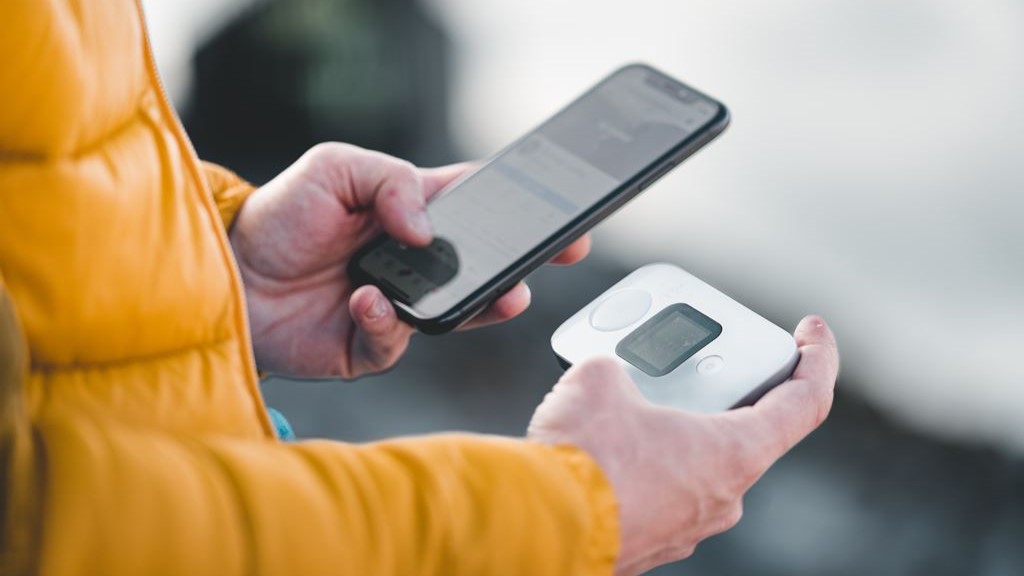
SIM card or pocket Wi-Fi is required
Beyond clothes, consider packing essentials like a universal power adapter (Japan uses Type A and B sockets), portable Wi-Fi or SIM card for internet access, and any necessary medications (with a copy of the prescription).
Which is better: a SIM card or pocket Wi-Fi?
When traveling in Japan, one essential to consider is securing internet access, especially given that many locations still don't offer free Wi-Fi. To ensure you can use your smartphone throughout your trip, you'll typically have three options: (1) a SIM card, (2) pocket Wi-Fi, or (3) the roaming service provided by your mobile company. Roaming services can be quite expensive, so we often recommend using a SIM card or pocket Wi-Fi. While SIM cards tend to be more affordable than pocket Wi-Fi, they can be trickier to set up. Pocket Wi-Fi, on the other hand, can be shared among several users, making it a favorable choice for families or groups.
▼SIM card
Advantages:
Relatively affordable.
Disadvantages:
Can be time-consuming to set up initially.
May have strict data limits.
▼Pocket Wi-Fi
Advantages:
Offers substantial data allowances.
A single device can be shared among multiple users.
Easily usable with PCs as well.
Disadvantages:
Typically more expensive.
Japan's representative services

Sakura Mobile's website
▼SIM card
>>Visit Sakura Mobile's official website
>>Visit mobal's official website
▼pocket Wi-Fi
>>Visit Sakura Mobile's official website
>>Visit NINJA WiFi's official website
>>Visit Wi-Fi RENTAL Store's official website
Book local tours as needed
Pre-book your tour and have a great trip!
Local tours offer deep insights into Japan's culture and heritage. Websites like Viator or GetYourGuide offer a variety of tours, from traditional tea ceremonies to modern pop culture tours in Akihabara. Consider unique experiences like staying with monks on Mt. Koya or taking a cooking class to learn authentic Japanese dishes.
>>Visit Viator's official website
>>Visit GetYourGuide's official website
Purchase advance tickets for popular attractions
Make a reservation to avoid crowds
Attractions like Tokyo Disneyland, Universal Studios Japan, or the Studio Ghibli Museum often have long ticket queues. Buy tickets online in advance to save time. Some attractions also have timed entry, so check the specific time slots available and plan accordingly.
▼Tokyo Disney Resort
>>Visit Tokyo Disney Resort official website
>>Visit Viator's Tokyo Disneyland page
>>Visit Viator's Tokyo DisneySea page
>>Visit GetYourGuide's Tokyo Disneyland page
>>Visit GetYourGuide's Tokyo DisneySea page
▼Universal Studios Japan
>>Visit USJ official website
>>Visit Viator's USJ page
>>Visit GetYourGuide's USJ page
Buy travel insurance

insurance concept, health, life and travel insurance
It is important to be prepared for emergencies
While Japan is a safe country, travel insurance is crucial for unforeseen events like health emergencies, travel disruptions, or lost baggage. Ensure your policy covers medical expenses in Japan, as healthcare, though excellent, can be expensive.
Here we introduce online travel insurance services that are popular worldwide.
World Nomads: An online travel insurance service widely endorsed by travelers worldwide. They offer plans that cover adventurous activities and high-risk sports.
>>Visit World Nomads' official website
AIG Travel Guard: An insurance service available to travelers all over the world. They offer a wide range of options, including cancellation protection and emergency medical insurance.
>>Visit AIG Travel Guard's official website
Share your itinerary with emergency contacts
Organize your reservation information
Keep a digital and printed copy of your detailed itinerary, including hotel addresses, train schedules, and booked tours. Share this with a trusted family member or friend not traveling with you.


